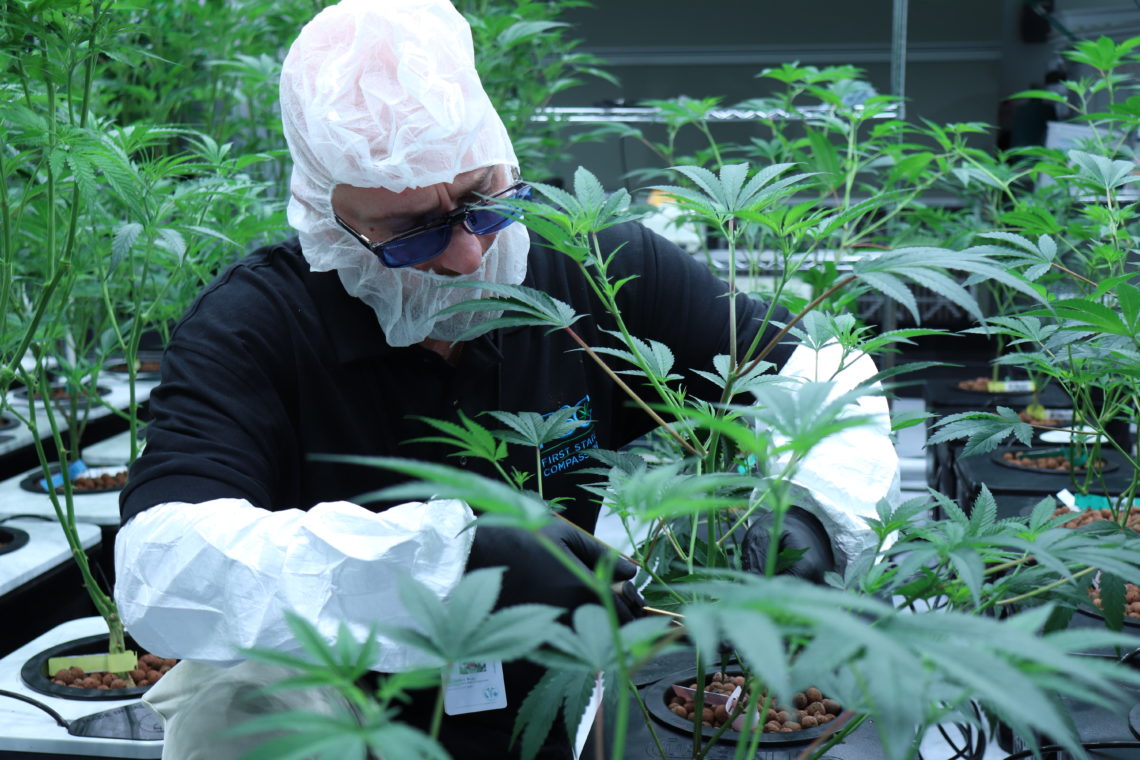A History of Healing
Cannabis has been used in medicine for thousands of years to treat pain and other ailments. In 1213 B.C., Egyptians used cannabis for glaucoma and inflammation; Indian medicine cited cannabis as a cure for leprosy in 600 B.C.; and in 200 A.D., Chinese surgeon Hua Tuo ground the cannabis plant into a powder, mixed it with wine, and gave it to patients before surgery as an anesthetic. Use of cannabis fell out of favor when modern medicine changed from plants to pills.

The highly controlled medication used today comes in many forms: capsules, oils, tinctures, concentrates, pre-rolls, topicals and chewable tablets. Cannabis has proven to be an effective treatment for symptoms from conditions including chronic pain, neuropathy, gastrointestinal issues and multiple sclerosis, from easing the symptoms of epilepsy to helping combat the debilitating anxieties associated with PTSD (Post Traumatic Stress Disorder). Studies continue to show the extensive reach of medical cannabis benefits:
- Can delay the progression of ALS (“Lou Gehrig’s disease”)
- Can deter the symptoms and progression of Alzheimer’s disease
- Can treat the symptoms of HIV/AIDS
- May inhibit the growth of cancer tumors
First State Compassion cultivates over 19 cannabis strains grown in-house (subject to availability). These are the healing benefits of 2 species of cannabis:
Benefits of Sativa:
- Feelings of well-being
- Uplifting thoughts
- Stimulates and energizes
- Increases focus and creativity
- Fights depression
Benefits of Indica:
- Relieves body pain
- Relaxes muscles
- Relieves spasms, reduces seizures
- Relieves headaches and migraines
- Relieves anxiety or stress
A Better and Safer Way to Treat Pain
Message from CNN’s Dr. Sanjay Gupta to U.S. Attorney General:
Medical Cannabis could save many addicted to opioids … Cannabis can help treat pain, reducing the initial need for opioids. Cannabis is also effective at easing opioid withdrawal symptoms, much like it does for cancer patients, ill from chemotherapy side effects. Finally, and perhaps most important, the compounds found in cannabis can heal the diseased addict’s brain, helping them break the cycle of addiction … there is no other known substance that can accomplish all this. If we had to start from scratch and design a medicine to help lead us out of the opioid epidemic, it would likely look very much like cannabis.
Dr. Sanjay Gupta, CNN
All You Need to Know About Medical Marijuana … But Were Afraid to Ask!
Myths and inaccuracies about medical cannabis are as prevalent as the growing list of doctors and patients who swear by its restorative and therapeutic benefits. If you’re considering medical cannabis as a treatment, get the facts. Check this article for straightforward answers to common cannabis questions.
Really Understanding Women’s Health and Medical Marijuana
Since more women than men are likely to suffer from diseases such as Alzheimer’s and arthritis, it’s no wonder there’s a steadily narrowing gender gap of patients using cannabis as part of their health and wellness plan.
Qualifying Conditions
The most commonly known ingredient in cannabis, THC (Tetrahydrocannabinol), is responsible for the high that comes from ingesting cannabis , while CBD (Cannabidiol) is responsible for many of the healing effects. Medical cannabis products are created with these two elements used in varying prescription levels according to a patient’s response to cannabis and their medical condition. Remember: modern cannabis is significantly stronger than it was in previous years, so it’s important to talk with your doctor about the potential benefit of adding cannabis to your healthcare program.
For a current list of conditions that may qualify a person for medical cannabis treatment in Delaware, check the Delaware Medical Marijuana Program website.
Responsibility and Cannabis:
Although cannabis has medicinal purposes and benefits, it can still have side effects just like any other medication if not used properly and responsibly. Potential side effects are short-term memory loss, red eyes, impaired motor skills, dry mouth, increased heart rate, anxiety and paranoia.
- Consuming alcohol, sedative medications and other pharmaceuticals can intensify the side effects.
- When starting any form of cannabis, always begin with a small dose and wait the proper amount of time for it to take effect before consuming more. If there is no effect, increase your dosage gradually.
- Smoking and vaping are typically the quickest methods of ingestion, whereas tinctures, oils and edibles take longer to take effect.
- Medical cannabis should not be used before or while operating a vehicle or heavy machinery.



